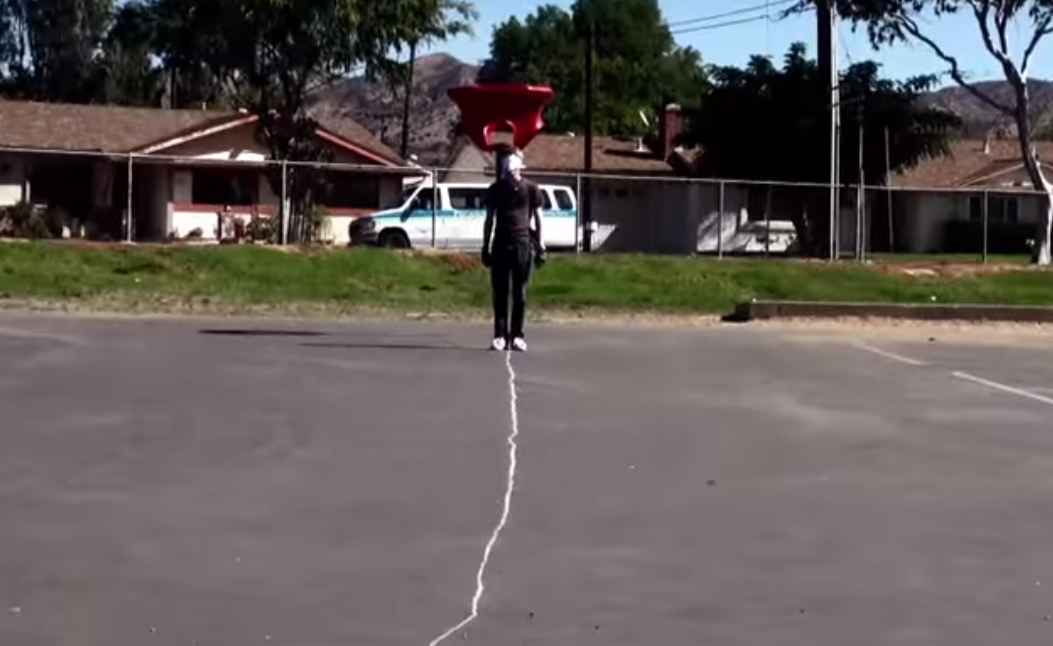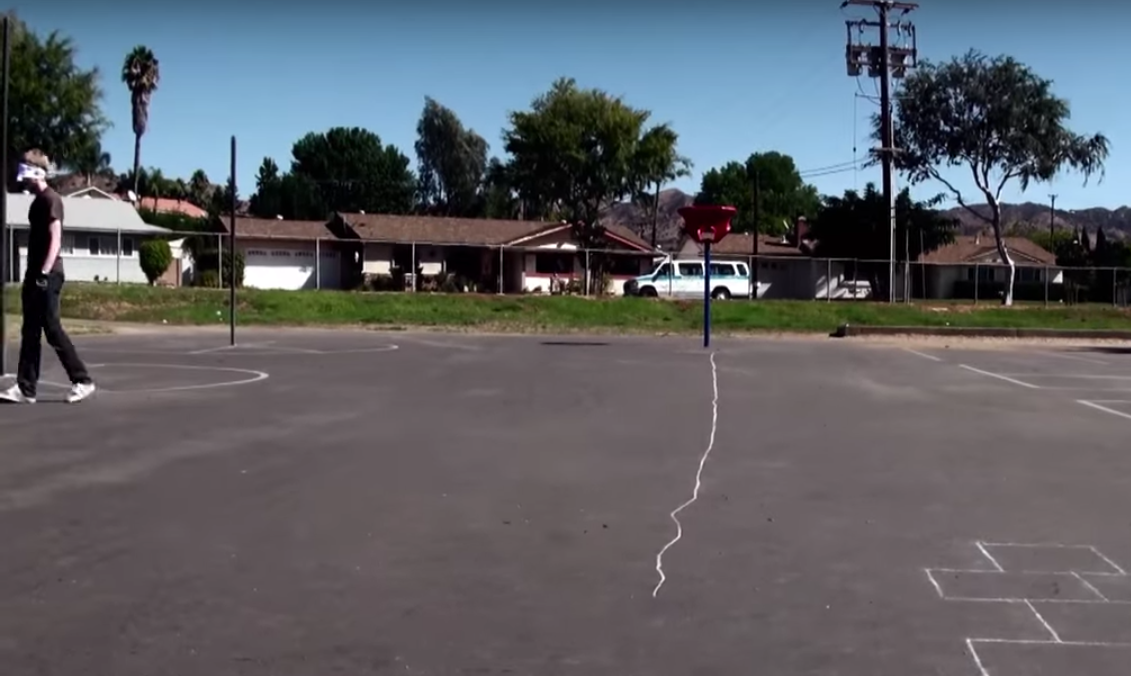Dire Straights

Here’s a science experiment you can do at home. It’s not going to meet the standards of a peer-reviewed journal, of course, but it’s close enough. You’ll need a few things: a blindfold or the equivalent, a good amount of open space, some way to mark a straight(-ish) line, and a friend to make sure you don’t walk into a wall.
Your job: while temporarily blind, try to walk on that straight line.
You almost certainly can’t — at least not for a large distance.
Can’t try it yourself right now? Let’s look at some screenshots from a video.

The video in question is here, and that jumps to the point where the above scene begins. (A caveat: if you watch the whole video, you’ll hear the guy in question use the word “retard” as a casual slur. Don’t do that.) Keep watching for a few more seconds, and you’ll see where he goes. But just to make it easy on you, here’s another screenshot:

He’s nowhere close to that line. He’s so far away, you may not have immediately noticed where he went. (Look to your left.)
And it’s true for everyone — we simply can’t walk the line. And we don’t just veer off to the side. As LiveScience notes, “lacking external reference points, [people] curve around in loops as tight as 66 feet (20 meters) in diameter, all the while believing they are walking in straight lines.” That’s bad if you’re lost in the desert, as you may never escape; that’s good, as Wired explains, if you’re testing out virtual reality goggles.
But good or bad, it’s weird, right?
It gets weirder: the science community has no idea why this happens.
Researcher Jan Souman of the Max Planck Institute for Biological Cybernetics in Tübingen, Germany has been exploring the possibe explanations for years. He sat down with NPR to discuss some of the theories he’s tested, and one by one, he’s found evidence that those factors don’t matter. Handedness? Nope — lefties and righties both veered in either direction. Brain hemisphere dominance? Nope — same result. Leg strength, per New Scientist, also didn’t matter. Neither did leg length; Souman and his team outfitted shoes with some extra rubber soles, the test subjects still veered off in a seemingly random direction.
Souman suggests that there may not be a singular reason why this happens; rather, it could be a lot of little things. In a press release announcing his findings, Souman said that “small random errors in the various sensory signals that provide information about walking direction add up over time, making what a person perceives to be straight ahead drift away from the true straight ahead direction.” If so, don’t expect a deeper explanation any time soon.
 Bonus fact: If you’re on a computer (as opposed to a phone) right now, take a look at your mouse cursor — it’s an arrow. But it’s not pointing up — points up and to the left. The reason for the angle, per StackExchange, was the low resolutions of screens when the mouse cursor was invented. As seen on the right, “drawing a straight line (left edge of arrow) and a line at a 45 degree angle (right edge of arrow) was easier to do and more recognizable than the straight cursor.”
Bonus fact: If you’re on a computer (as opposed to a phone) right now, take a look at your mouse cursor — it’s an arrow. But it’s not pointing up — points up and to the left. The reason for the angle, per StackExchange, was the low resolutions of screens when the mouse cursor was invented. As seen on the right, “drawing a straight line (left edge of arrow) and a line at a 45 degree angle (right edge of arrow) was easier to do and more recognizable than the straight cursor.”
From the Archives: The Isolated Tree: Walking in a straight line in the desert, with no trees around? Hard. Driving, drunk, in a straight line in the desert, with one tree around? Easy — which is bad, if you’re the tree.
Related: Sidewalk chalk, for all your straight line drawing needs.
